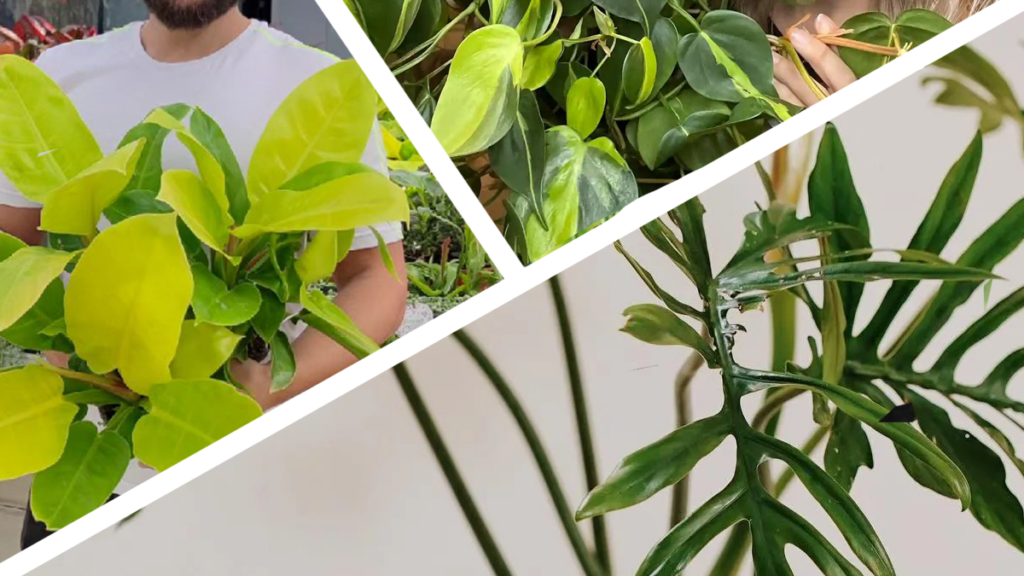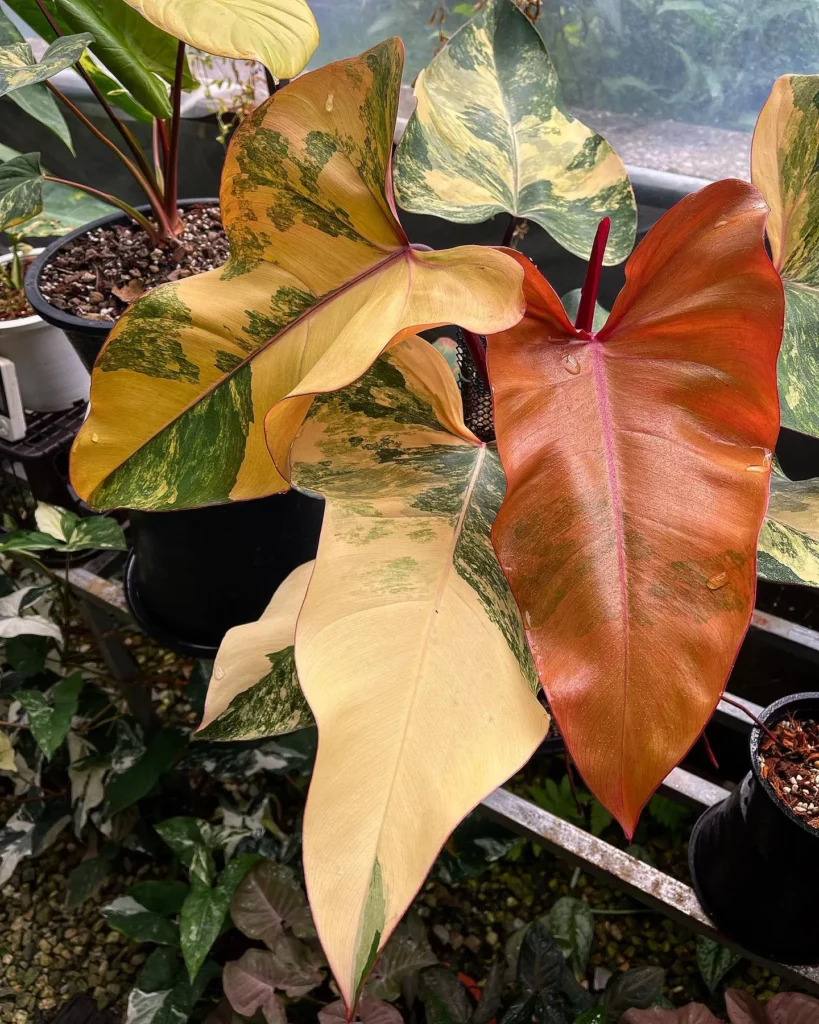Welcome to my guide on the beautiful and unique Philodendron Rugosum, also known as the Pigskin Philodendron. If you’re looking to add a touch of exotic beauty to your indoor plant collection, look no further.
This tropical plant is a showstopper with its textured, wrinkled leaves that resemble animal skin. Not only is it visually stunning, but it’s also relatively easy to care for, making it a great choice for both beginners and experienced plant enthusiasts.
Key Takeaways:
- Philodendron Rugosum is a distinct tropical plant with textured, wrinkled leaves.
- It thrives in a warm, humid environment with indirect, bright light.
- Consistent moisture, regular misting, and balanced fertilizer are essential for its care.
Provide Bright, Indirect Light
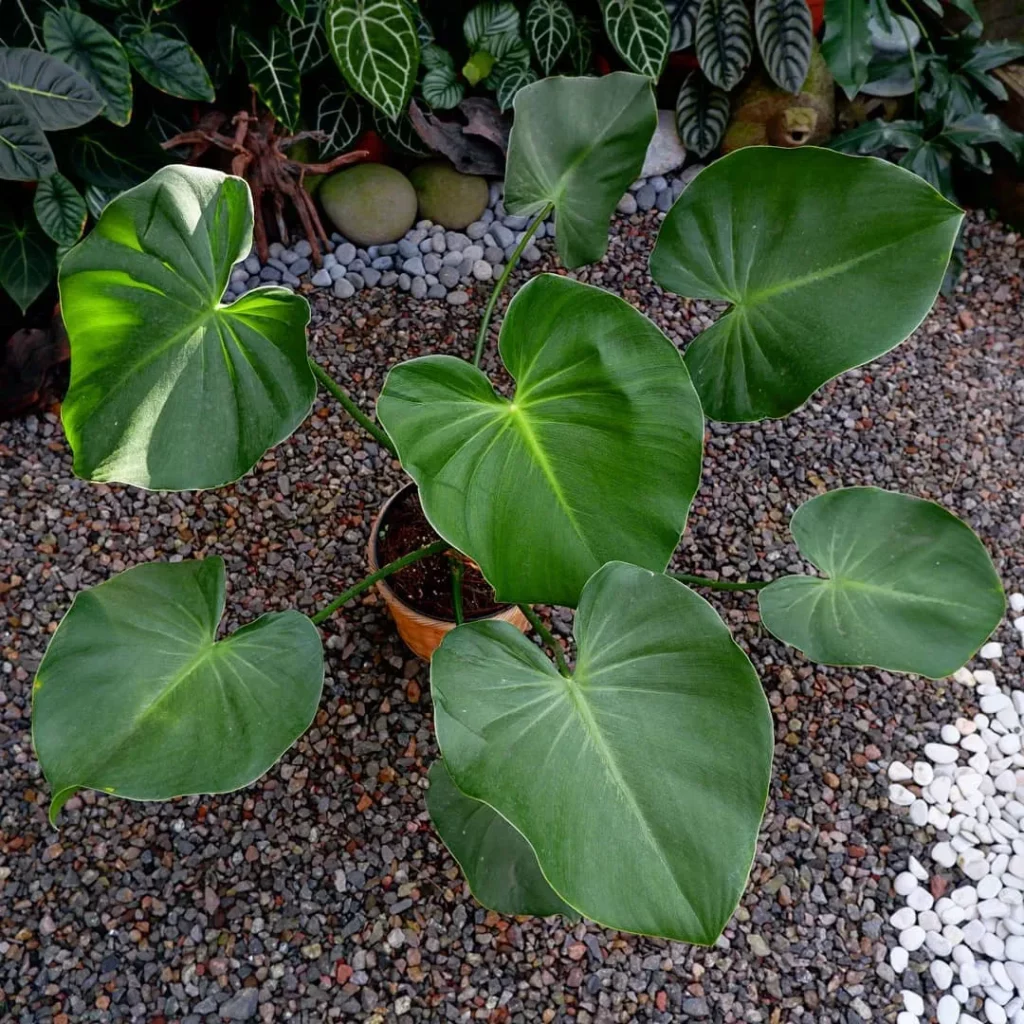

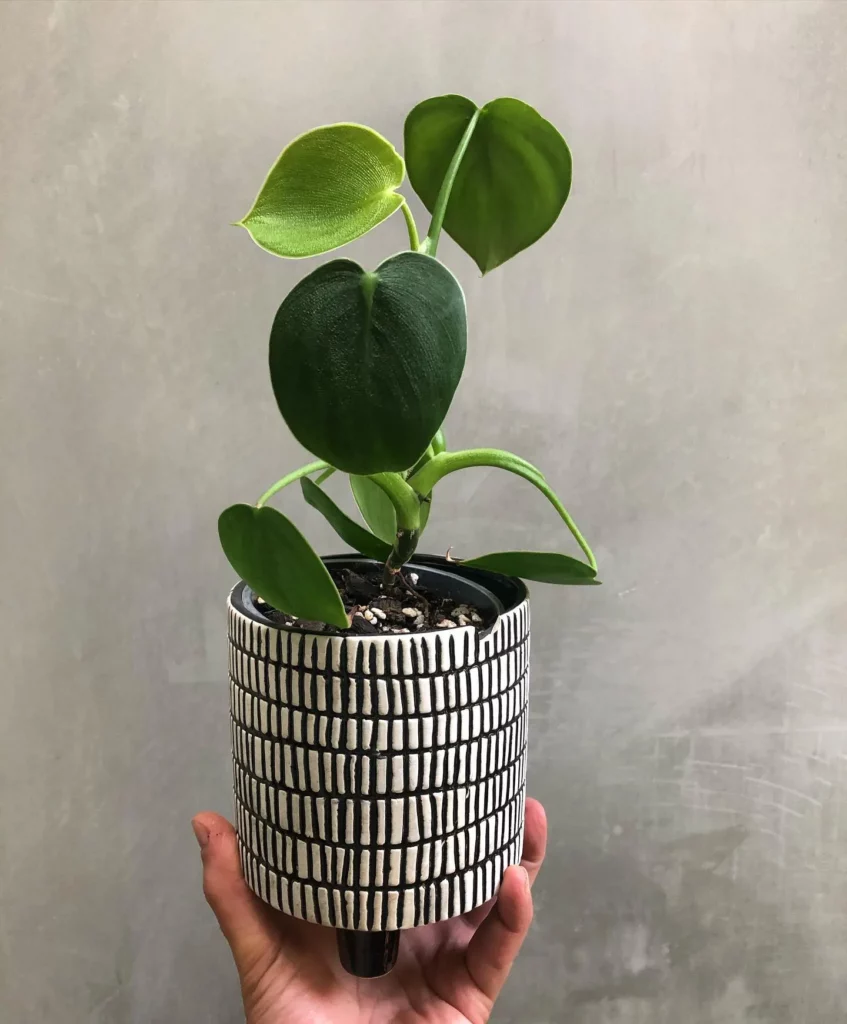
When it comes to caring for Philodendron Rugosum, providing the right amount of light is crucial. This tropical beauty thrives in bright, indirect light, making it an ideal addition to any indoor space. Position your Philodendron Rugosum near an east or west-facing window to ensure it receives several hours of gentle morning or afternoon sun. However, be cautious of direct midday sun as it can scorch the leaves. If the light is too intense, consider adding sheer curtains to filter the sunlight.
Key Points:
- Position your Philodendron Rugosum near an east or west-facing window for optimal light exposure.
- Avoid direct midday sun, as it can cause leaf scorching.
- Consider using sheer curtains to filter intense sunlight.
- Rotate your plant every few days to ensure even light exposure on all sides.
No products found.
Provide High Humidity
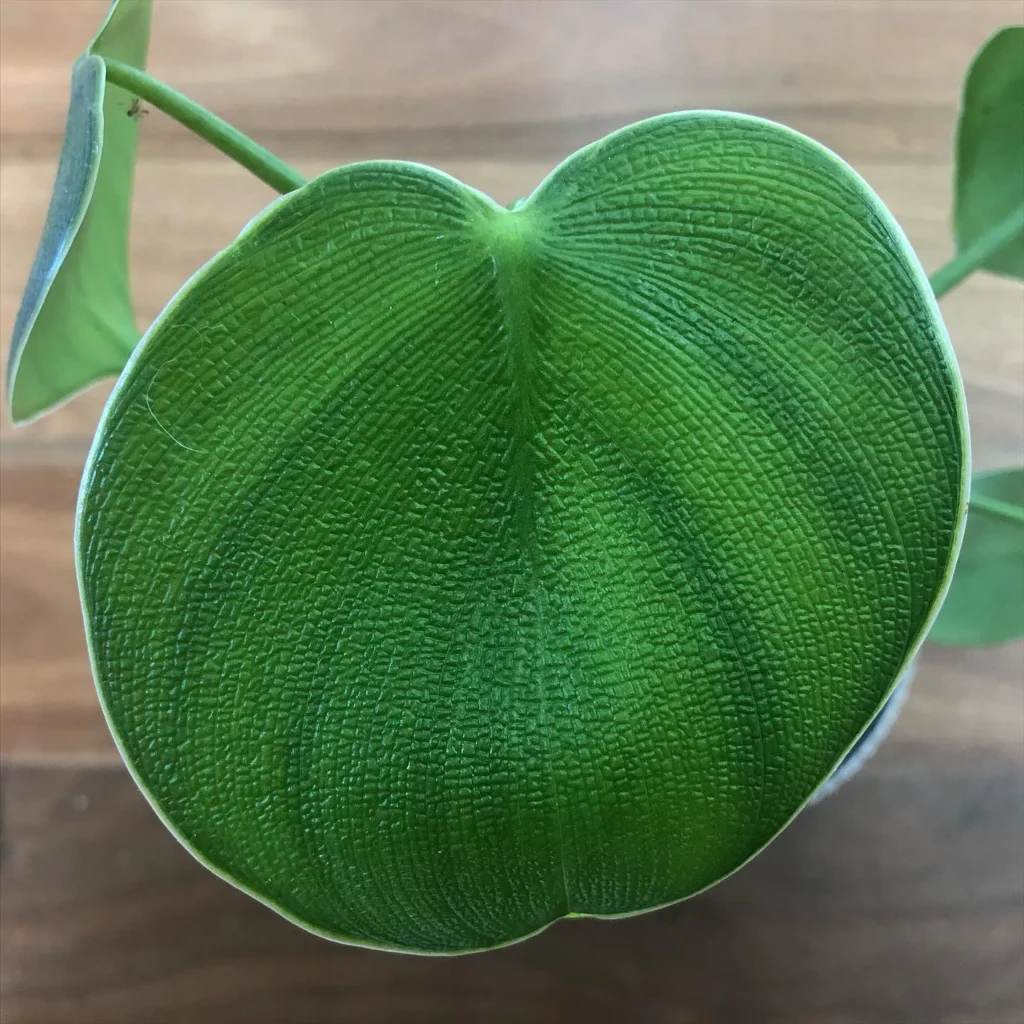
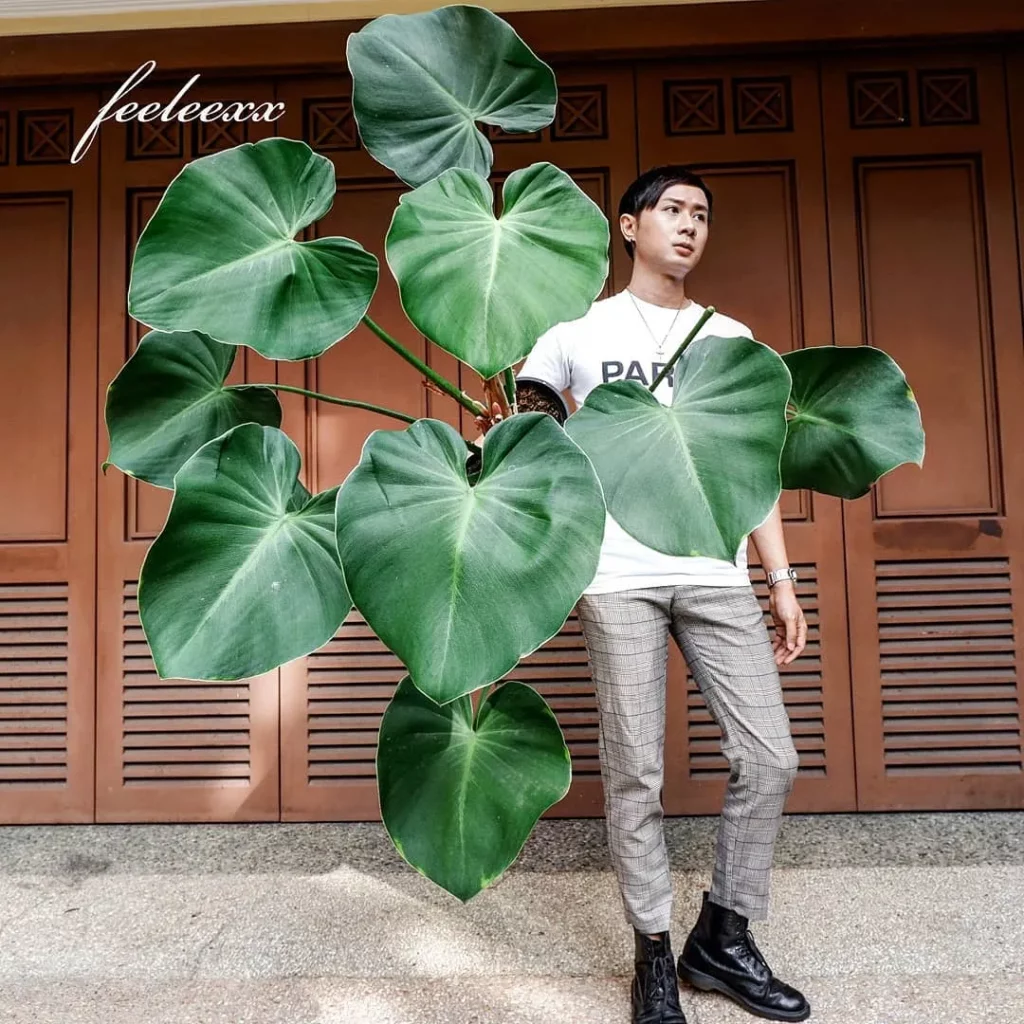

To ensure the optimal growth and health of your Philodendron Rugosum, it is crucial to provide high humidity levels similar to its natural tropical habitat. Here are some helpful tips to create a humid environment for your plant:
- Use a humidifier: Investing in a humidifier is one of the best ways to maintain consistent humidity levels around 60-70%. Set up the humidifier near your plant to provide the necessary moisture.
- Tray with pebbles and water: Place your plant’s pot on a tray filled with pebbles and water. As the water evaporates, it increases the localized humidity around the plant.
- Mist the leaves: Regularly mist the leaves of your Philodendron Rugosum every few days to provide a boost of hydration and prevent dust accumulation.
Use a Well-Draining Potting Mix
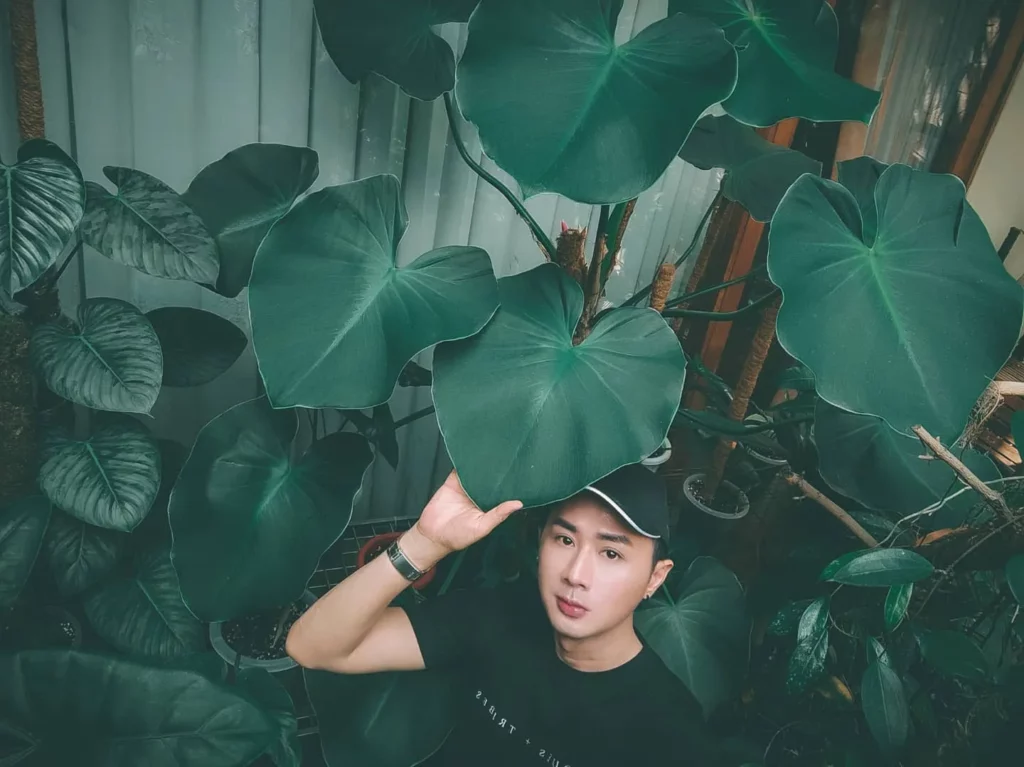

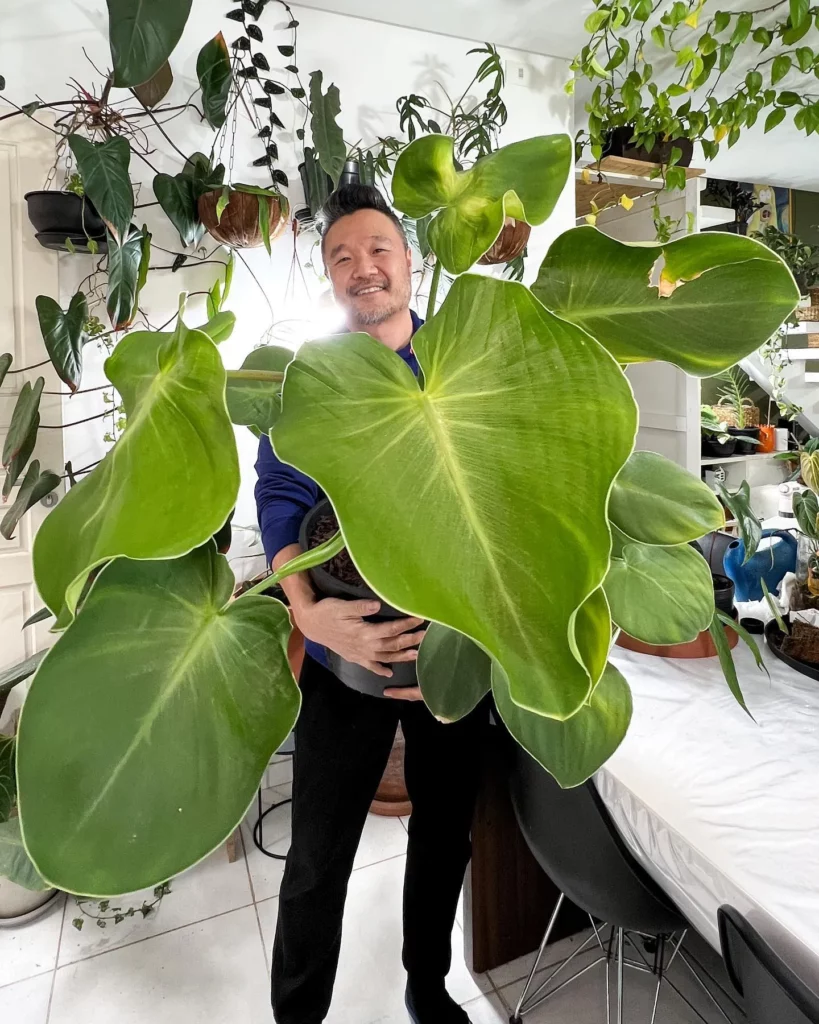
When it comes to caring for Philodendron Rugosum, one important aspect to consider is the type of potting mix it requires. This unique tropical plant thrives in a well-draining potting mix that mimics the conditions of its natural habitat. Choosing the right potting mix will ensure that your Philodendron Rugosum receives the necessary nutrients and has proper drainage.
An ideal potting mix for Philodendron Rugosum is one that is specifically formulated for tropical plants, such as an African violet mix. These mixes are designed to provide the right balance of moisture retention and drainage, creating a favorable environment for the plant’s roots to thrive. Additionally, you can enhance drainage further by adding perlite or small orchid bark pieces to the potting mix.
It’s also important to repot your Philodendron Rugosum every two years or so. This allows you to refresh the potting mix and ensure that the plant has access to adequate nutrition. As the roots grow and spread, repotting also provides more space for them to expand, promoting healthy growth and development.
Watering Tips for Philodendron Rugosum


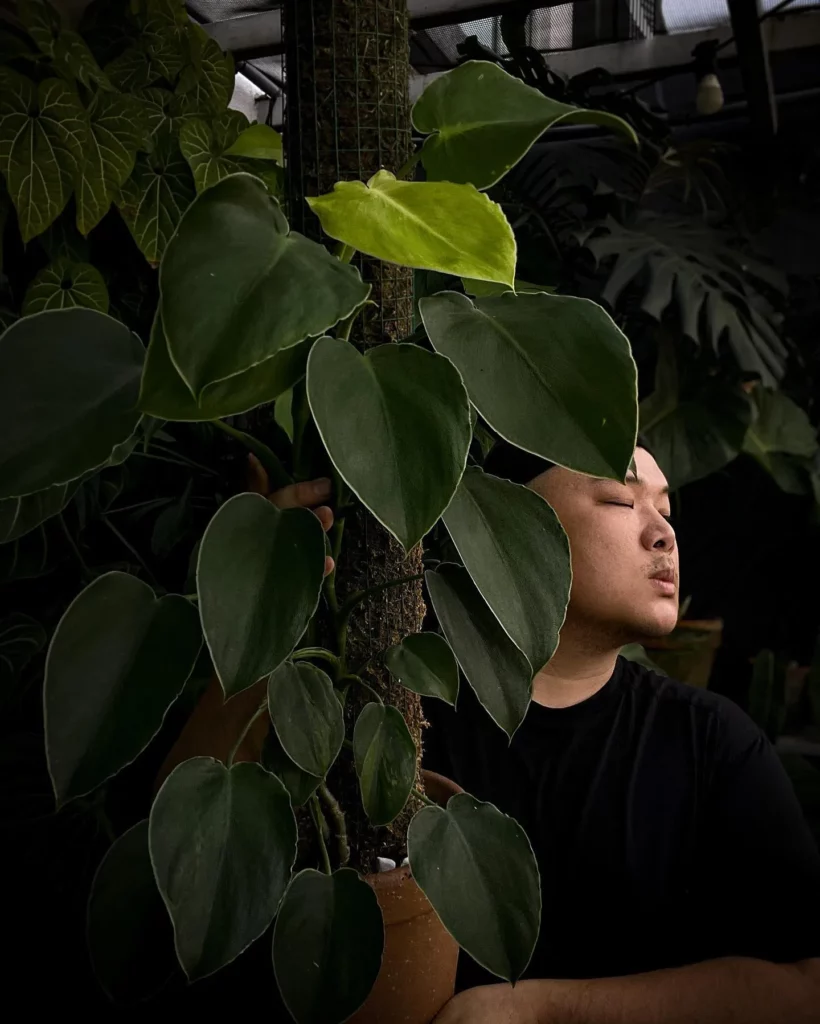
Proper watering is essential for the health and growth of your Philodendron Rugosum. Here are some helpful tips to ensure you’re giving your plant the right amount of water:
1. Check the soil moisture
Before watering, check the top few inches of soil to see if it’s partially dry. Stick your finger into the soil or use a moisture meter to gauge the moisture level. Philodendron Rugosum prefers moist soil, but overwatering can lead to root rot, while underwatering can cause leaf drop and browning.
2. Water thoroughly
When watering, make sure to thoroughly saturate the soil until water starts draining from the bottom of the pot. This ensures that the roots receive adequate hydration and helps flush out any accumulated salts or toxins in the soil.
3. Adjust watering frequency
The frequency of watering depends on various factors, such as the season and the humidity levels in your home. In general, water more often during the warmer months when the plant is actively growing, and reduce the frequency during the winter when the plant goes into dormancy.
- During summer, check the soil more frequently and water when the top inch or two feels dry.
- In winter, allow the soil to dry out slightly more between waterings.
Air Circulation and Pruning Tips for Philodendron Rugosum
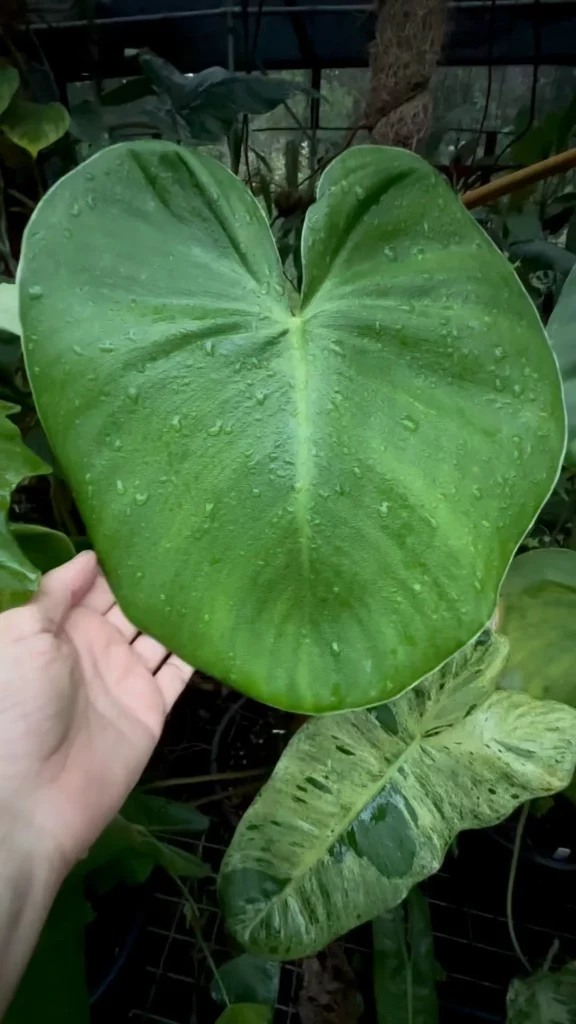
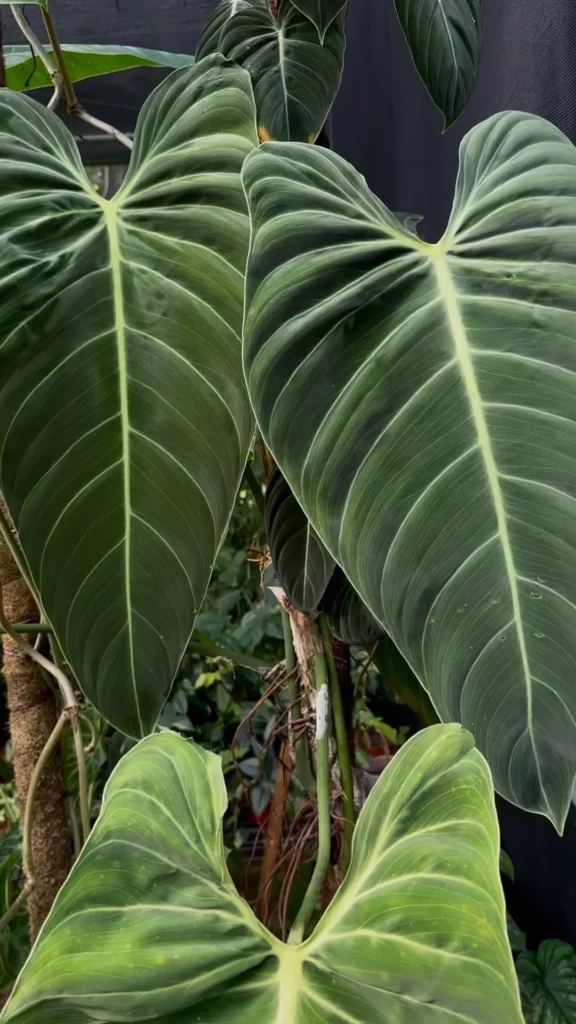
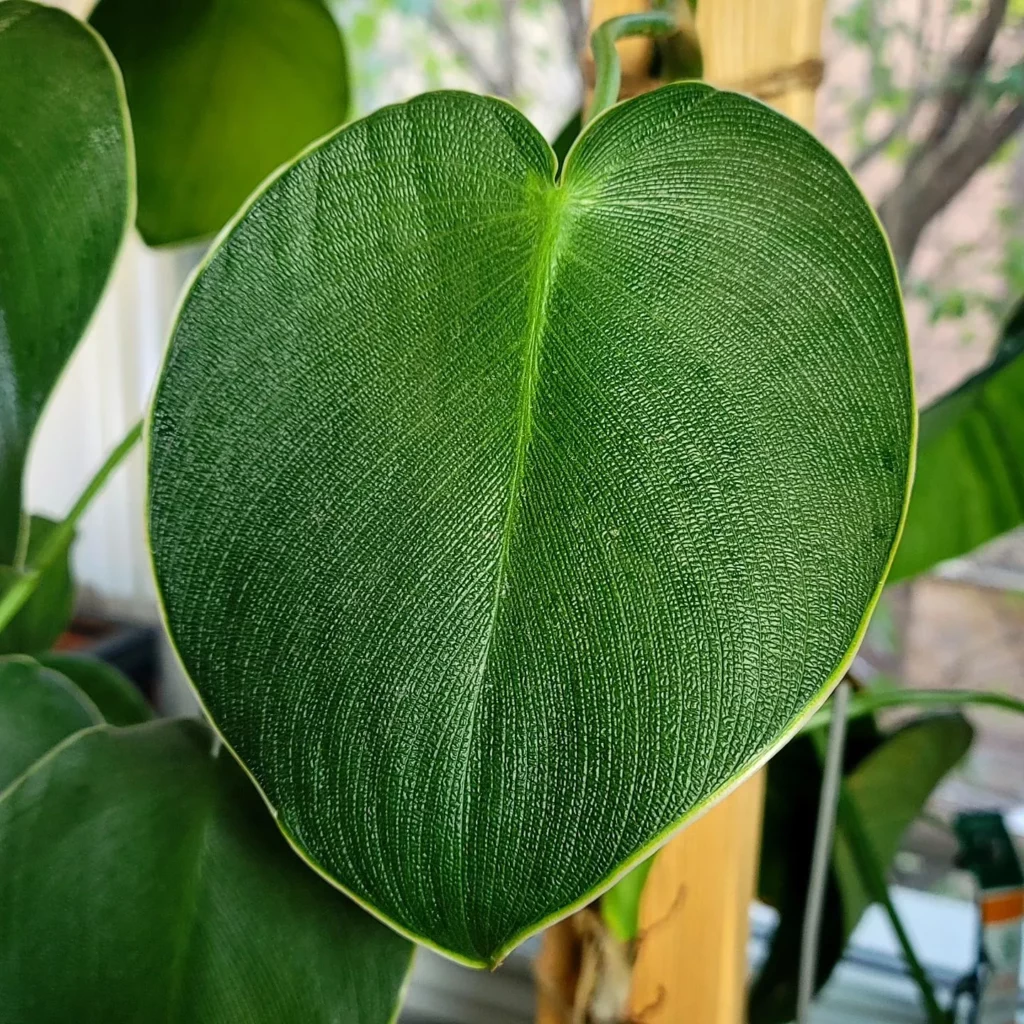
Proper air circulation is crucial for the health and well-being of your Philodendron Rugosum. Good airflow helps prevent the development of fungal issues and promotes strong and vigorous growth. Here are some tips to increase air circulation around your plant:
- Place a small oscillating fan near your Philodendron Rugosum and set it to low or medium speed. This will create a gentle breeze that circulates the air around the plant.
- Make sure there is adequate space between your Philodendron Rugosum and other plants or objects. This allows air to flow freely and prevents the build-up of stagnant air.
- Regular pruning is essential to maintain good air circulation within your Philodendron Rugosum’s canopy. Trim away any crowded or densely packed leaves to create openings and improve ventilation.
Pruning Tips
Pruning your Philodendron Rugosum not only enhances air circulation but also helps shape the plant and promote new growth. Follow these pruning tips for a healthy and attractive Philodendron Rugosum:
- Use clean and sharp pruning shears or scissors to avoid damaging the plant.
- Remove any yellowing or dead leaves by cutting them off at the base. This prevents the spread of diseases and improves the plant’s overall appearance.
- To encourage bushier growth, pinch or trim the tips of the stems. This encourages the plant to branch out and produce more foliage.
- If your Philodendron Rugosum becomes too large or outgrows its current space, you can prune it back more severely. Cut the stems back to a desired height, just above a leaf node.
Propagation of Philodendron Rugosum


Propagating Philodendron Rugosum is an exciting way to expand your plant collection or share the beauty of this exotic plant with others. There are several methods you can use to propagate Philodendron Rugosum, but stem cuttings are the most common and effective. To propagate using stem cuttings, select a healthy stem with at least a couple of leaves and exposed nodes. Allow the base of the cutting to callus over, which typically takes about a week, before planting it in a well-draining potting mix.
Place the cutting in a spot with bright, indirect light, and make sure to keep the soil consistently moist. Mist the leaves occasionally to maintain humidity. Within a few weeks, you should start to see roots developing. Once the roots have established themselves, the new plant can be transferred to a larger pot if needed. It’s important to note that Philodendron Rugosum can be a slow grower, so be patient and provide the necessary care and attention for successful propagation.
Selecting the Right Growth Nodes for Propagation
When choosing a stem cutting for propagation, look for nodes that are exposed and have at least one or two mature leaves. These nodes have the potential to develop roots and new growth. Using a sharp, clean knife or scissors, cut just below the node to ensure you have a healthy cutting. Remove any lower leaves, leaving only a few at the top to minimize water loss and encourage root development. Properly selecting and preparing the stem cutting will increase the chances of successful propagation.
Optimal Conditions for Propagation
- Provide bright, indirect light to encourage root and leaf growth.
- Keep the soil consistently moist but not overly saturated to prevent root rot.
- Mist the leaves to maintain humidity and prevent dehydration.
- Use a well-draining potting mix to promote healthy root development.
- Ensure the cutting is planted at an appropriate depth, with the node and a portion of the stem buried in the soil.
Growth and Development



When it comes to the growth and development of Philodendron Rugosum, providing the right care is key. This exotic plant is known for its fast growth, reaching heights of up to 15 feet outdoors. Its large, waxy, dark green foliage with stand-out veins adds a unique touch to any indoor space.
To ensure optimal growth, it’s important to create a suitable environment. Start by providing the plant with bright, indirect light. Position it near an east or west-facing window to receive several hours of gentle morning or afternoon sun. Avoid direct midday sun from a south window, as it can scorch the leaves. Rotating the plant every few days ensures equal light exposure on all sides, promoting balanced growth.
Another essential factor for the growth and development of Philodendron Rugosum is humidity. This tropical plant thrives in high humidity levels found in the rainforest. To replicate these conditions, use a humidifier to maintain humidity levels between 60-70%. Placing the pot on a tray filled with pebbles and water also increases localized humidity. Additionally, misting the leaves every few days helps boost hydration and prevents dust accumulation.
Pests and Diseases



When caring for Philodendron Rugosum, it’s important to be aware of the potential pests and diseases that may affect the plant. By staying vigilant and taking proactive measures, you can keep your Philodendron Rugosum healthy and thriving.
Common Pests
Two common pests that can infest Philodendron Rugosum are spider mites and mealybugs. Spider mites are tiny arachnids that typically appear as small dots on the underside of leaves, while mealybugs are small insects covered in a white, cotton-like substance.
To control these pests, you can wash the plant with a gentle stream of water, making sure to thoroughly clean the undersides of leaves. Additionally, you can use an insecticidal soap or organic neem oil to treat the affected areas. Regular monitoring and prompt action can help prevent these pests from causing significant damage to your plant.
Potential Diseases
One of the primary concerns for Philodendron Rugosum is root rot, which can occur due to overwatering or poor drainage. To prevent root rot, ensure that your plant is potted in a well-draining soil mix and avoid letting it sit in standing water. It’s essential to allow the top few inches of soil to dry out before watering again.
Regularly check the leaves for any signs of yellowing, browning, or wilting, as these can indicate potential disease issues. If you notice any abnormalities, adjust your watering practices or consult a plant care professional for further assistance.
- Monitor your Philodendron Rugosum regularly for signs of pests and diseases.
- If pests are present, wash the plant with water and treat with insecticidal soap or organic neem oil.
- To prevent root rot, ensure proper drainage and avoid overwatering.
- Check the leaves for any abnormal discoloration or wilting, and adjust watering practices accordingly.
Conclusion
In conclusion, the Philodendron Rugosum is an exceptional choice for those looking to add a touch of exotic beauty to their indoor plant collection. With its distinctive textured leaves and low-maintenance nature, it has become a favorite among both novice and experienced plant enthusiasts. By providing the proper care, including adequate lighting, humidity, well-draining soil, regular watering, and pruning, you can enjoy the vibrancy and allure of this tropical plant for many years to come.
As an exotic plant, the Philodendron Rugosum brings a unique and captivating element to any indoor space. Its large, waxy, dark green foliage with prominent veins adds a bold splash of greenery, creating a stunning focal point in any room. Whether you have a small apartment or a spacious home, this plant will effortlessly elevate the ambiance and add a touch of natural elegance to your surroundings.
Indoor plant care is essential for the health and longevity of your Philodendron Rugosum. By ensuring it receives bright, indirect light, maintaining high humidity levels, using a well-draining potting mix, watering appropriately, and pruning for optimal air circulation, you can provide the ideal conditions for robust growth. Remember to monitor for pests and diseases, taking prompt action if necessary, to preserve the plant’s health and vitality.
FAQ
How much light does Philodendron Rugosum need?
Philodendron Rugosum thrives in bright, indirect light. It is best positioned near an east or west-facing window to receive several hours of gentle morning or afternoon sun.
How do I increase humidity for my Philodendron Rugosum?
To increase humidity, you can use a humidifier to keep humidity consistently around 60-70%. Placing the pot on a tray filled with pebbles and water also helps increase localized humidity. Regularly misting the leaves every few days is also beneficial.
What type of potting mix should I use for Philodendron Rugosum?
Philodendron Rugosum prefers a well-draining potting mix that mimics tropical soil. Using a potting mix made for tropical plants, such as an African violet mix, provides the necessary nutrients for lush growth.
How often should I water my Philodendron Rugosum?
It is important to check the top few inches of soil and water when it is partially dry. Water thoroughly until excess starts to drain from the bottom of the pot. Adjust the watering frequency based on the season, watering more often in summer and reducing frequency in winter during dormancy.
How can I increase air circulation around my Philodendron Rugosum?
Good air circulation is important for Philodendron Rugosum to prevent disease and encourage strong growth. Running a small oscillating fan near the plant for several hours per day keeps air gently circulating. Pruning densely packed leaves or congested growth also opens up air flow within the plant’s canopy and promotes better ventilation.
How can I propagate Philodendron Rugosum?
Philodendron Rugosum can be propagated through stem cuttings. Select a healthy stem with at least a couple of leaves and exposed nodes. Allow the base of the cutting to callus over before planting it in a well-draining potting mix. Place the cutting in a spot with bright, indirect light and keep the soil consistently moist.
How tall can Philodendron Rugosum grow?
Philodendron Rugosum can reach heights of up to 15 feet outdoors. Indoors, it can be pruned and maintained at a more manageable size.
What pests and diseases should I watch out for with Philodendron Rugosum?
Philodendron Rugosum is susceptible to common houseplant pests like spider mites and mealybugs. Showering the plant underneath the leaves to remove pests and treating with insecticidal soap or organic neem oil can effectively control these pests. Root rot caused by overwatering is a concern, and ensuring well-draining soil and proper watering techniques is essential to avoid this issue.
Is Philodendron Rugosum a good choice for indoor plant collections?
Yes, Philodendron Rugosum is an ideal choice for adding an exotic touch to indoor plant collections. With its unique textured leaves and low-maintenance nature, it is a popular choice for both beginner and experienced plant enthusiasts.

